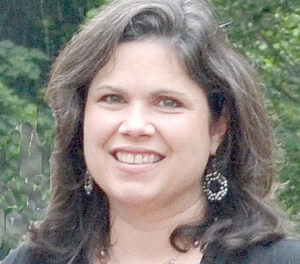The evening promised extremely passionate and moving pieces as conductor Daniel Meyer took the stage of the Thomas Wolfe Auditorium for the Asheville Symphony‘s third Masterworks concert of the season. Alongside flute soloist Lissie Okopny, the Asheville Symphony performed works that had danceable rhythms by Bartók, Bach, and Beethoven.
Strings took center stage for the first piece of the evening. Béla Bartók’s Divertimento is a mixture of beautiful consonance and unsettling dissonance. The performers exhibited exquisite communication between each other, for each of the stylistic articulations, whether a delicate staccato or a driving legato, was uniform throughout the entire ensemble. Not only did the Divertimento have a wide variety of articulations, but it also featured a soloist-comprised chamber group, which consisted of Jason Posnock and Debra Anthony, violins, Kara Poorbaugh, viola, Jacqueline Taylor, cello, and Vance Reese, double bass. This small ensemble of performers carried melodic passages with superb fluidity around the stage. Together, they wove a fabric of musical textures with the rest of the ensemble. It was especially delightful to hear a sense of call-and-echo in the music between sections. The way the delicate music traveled throughout the different sections of the strings was absolutely seamless. The second movement was much different stylistically, though it still continued a dance-like theme. It is said that the second movement continued Bartók’s then-ongoing exploration of nighttime. The folk-like tunes were ghostly and haunting, filling the hall with an eerie beauty. The performers created a sense of captivating tension that finally resolved itself in a lively third movement.
The Asheville Symphony shrank to a small chamber orchestra as principal flutist Lissie Okopny came onstage to perform Johann Sebastian Bach’s Orchestral Suite No. 2 in B minor, S.1067. Okopny’s flute swam in a sea of strings and then glistened with purity as she broke off into her own solo parts. The movements had balance between tutti and solo performance. For the first four movements, Okopny played in an extremely rich lower register. Then in the fifth movement, she leapt into the higher range and played technically demanding passages with fluidity and elegance. Her fingers hardly seemed to move. It was evident that she was relaxed and truly enjoying the music. The performance received a standing ovation from the audience.
After the intermission, the entirety of the Asheville Symphony entered the stage to perform a riveting presentation of Ludwig Van Beethoven’s Symphony No. 7 in A Major, Op. 92. Accents burst from the melodic music and a drive constantly pushed the piece forward. Each section took turns pressing out of the texture and then sinking back into it. This created constant cycling that conveyed a driving, dancing sensation. The conductor took the work at a brisk pace, so overall it seemed much faster than other performances some of us may have heard, live or on records; the second movement, in particular, really flew. However, the care given to the tempo by Meyer made it work extremely well. Before playing this work, conductor Meyer told the audience that the instruments would dance across the stage. Little did we know that the way Beethoven orchestrated the music, the bow strokes from one string section passed to the next, creating the illusion of instruments literally dancing across the stage. The final movement is lively and fast. Each instrument blended with the next, and the sound coming from the ensemble into the audience was fantastic. Waves of music washed over the crowds as the piece came to an exciting climactic ending. The Asheville Symphony delivered a superb concert of dance-like music that received a very deserving roaring ovation from the audience.
The season continues with a “Classical Christmas” on December 15. For details, click here.











